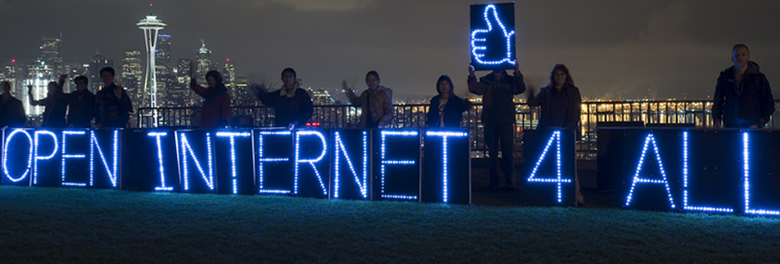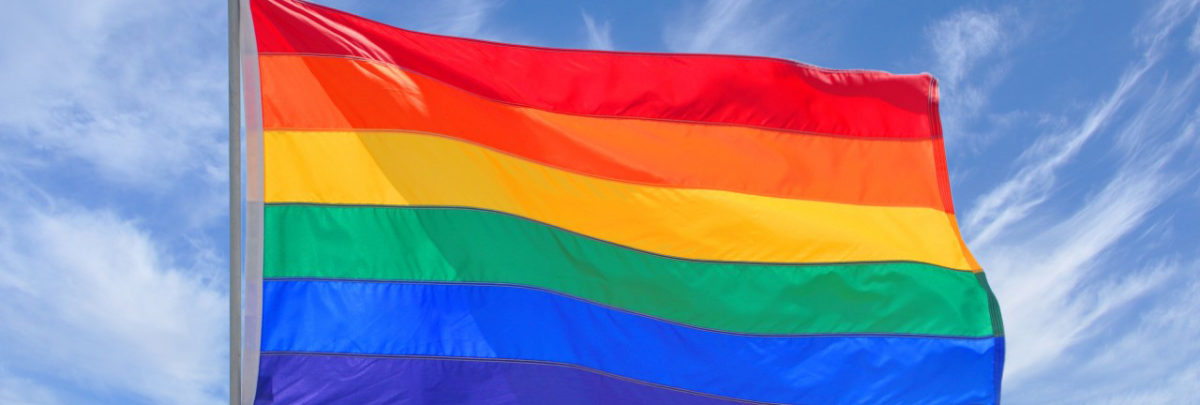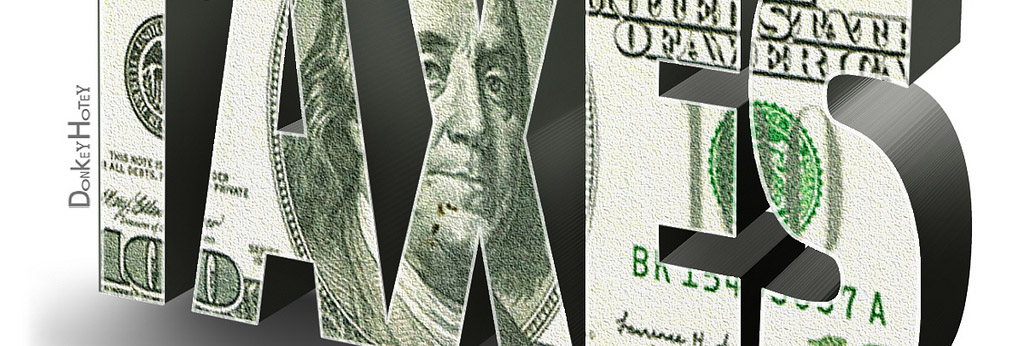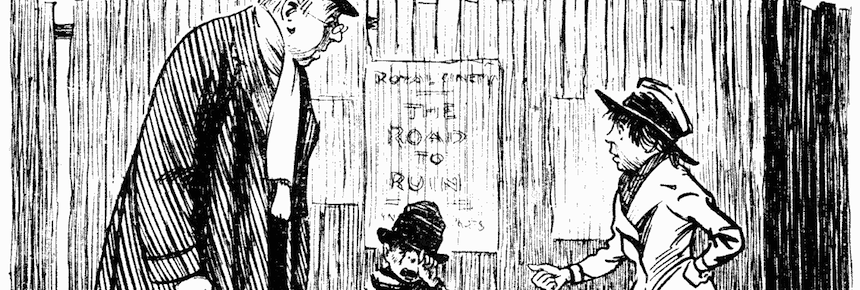Download the full book list here: Book List Greylock Together (1)
Fiction
Man in the High Castle, Philip K. Dick (288 pp)
Now a t.v. series, this award-winning sci-fi novel takes place in 1962 America. Slavery is legal once again. The few Jews who still survive hide under assumed names. In San Francisco, the I Ching is as common as the Yellow Pages. All because some twenty years earlier the United States lost a war—and is now occupied by Nazi Germany and Japan.
The Book of Joan, Lidia Yuknavitch (266 pp)
A New York Times Editor’s Choice, this “brilliant and incendiary” dystopian novel mixes realism and fabulism, retelling the Joan of Arc story. Earth, circa 2049, has been devastated by global warming and war; the wealthy live on a suborbital complex ruled by a billionaire celebrity turned dictator.
Amanda Wakes Up, Alisyn Camerota (327pp)
CNN news anchor Camerota writes about a young upstart reporter, a ratings-obsessed media mogul, and a female senator running against a political newcomer fresh from Hollywood. Considered ‘prescient,’ despite it being in formation years ago.
Pussy, Howard Jacobson (208 pp)
“If Trump’s presidency is a source of continuing anxiety, then among its very few benefits is that it has moved one of our finest comic writers to write an elegantly savage satire of a man who defies satire.” (Guardian) “Hot revenge in print.” (Washington Post)
American War: A Novel, Omar El Akkad (352 pp)
About a second American Civil War, a devastating plague, and one family caught deep in the middle—a story that asks what might happen if America were to turn its most devastating policies and deadly weapons upon itself.
Hello America, J.G. Ballard (240 pp)
A fable “driven on by wishes of possession and power but guided internally by myths of America…” (The Guardian). 100 years after America has been abandoned in the late 20th C, a group of European explorers returns to the climatically mutated continent.
The Queue, Basma Abdel Aziz
A female Arab journalist/psychiatrist writes a Kafka-esque novel against the backdrop of a political revolution. “Describes the sinister nature of authoritarianism, and illuminates the way that absolute authority manipulates information, mobilizes others in service to it, and fails to uphold the rights of even the faithful.”
New York 2140, Kim Stanley Robinson (613 pp)
Science-fiction about New York City after it has been vastly changed by global warming. The oceans are about 50 feet higher than before, but this is mainly an adventure story about a cast of characters navigating the new normal by canal boat, diving suit, and sky bridge.
The Plot Against America, Phillip Roth
This novel is an alternative history in which Franklin Delano Roosevelt is defeated in the presidential election of 1940 by Charles Lindbergh. The novel follows the fortunes of the Roth family during the Lindbergh presidency, as antisemitism becomes more accepted in American life and Jewish-American families like the Roths are persecuted.
It Can’t Happen Here, Sinclair Lewis
A semi-satirical 1935 political novel published during the rise of fascism in Europe, it
describes the rise of a politician who defeats Franklin Delano Roosevelt and is elected President of the United States, after fomenting fear and promising drastic economic and social reforms while promoting a return to patriotism and “traditional” values. After his election, Windrip takes complete control of the government and imposes a plutocratic/totalitarian rule with the help of a ruthless paramilitary force.
The Rhinoceros, Eugene Ionesco (play)
The inhabitants of a small, provincial French town turn into rhinoceroses. The play is often read as a response and criticism to the sudden upsurge of Communism, Fascism, and Nazism during the events preceding World War II, and explores the themes of
conformity, culture, mass movements, mob mentality, philosophy and morality.
1984, George Orwell
This dystopian novel is set in a world of perpetual war, omnipresent government surveillance, and public manipulation. The superstate and its residents are dictated to by a political regime euphemistically named English Socialism, shortened to “Ingsoc” in Newspeak, the government’s invented language. Individualism is persecuted and independent thinking is “thoughtcrime.”
Americanah, Chimamanda Ngozi Adichie
A love story about race and identity, from the point of view of a female Nigerian immigrant.
Brave New World, Aldous Huxley
Written in the shadow of the rise of fascism during the 1930s, this dystopian sci-fi novel speaks to a 21st-century world dominated by mass-entertainment, technology, medicine and pharmaceuticals, the arts of persuasion, and the hidden influence of elites.
Fahrenheit 451, Ray Bradbury
A sci-fi book about censorship, yes, but also about books and all the things they represent being drowned out by less meaningful information and media. (only 150 pp!)
Submission, Michel Houellebecq
A dystopian novel about a near-future France that ends up choosing between Islamism and fascism.
Ecotopia, Ernest Callenbach
An inspiring utopian novel portraying a sustainable society most of us would actually like to live in!
The Drowned World, J.G. Ballard (208 pp)
Published in 1962, this prescient novel imagines a terrifying future in which solar radiation and global warming have created a prehistoric environment in London.
The Penultimate Truth, Philip K. Dick
Resistance literature that explored the notion of “fake news” long before it became political reality. A parable about the power of propaganda, making a strong case for the idea that fear is the only political weapon more powerful than hope.
The Trial, Franz Kafka
Josef K. wakes up and is arrested on his 30th birthday for reasons he can’t understand. “K was living in a free country, after all…”
Uncle Tom’s Cabin, Harriet Beecher Stowe
A scathing indictment on man’s inhumanity to man, a rejoicing in the occasional successful escape from hell, and bright spotlight on religion’s role in the condoning, encouraging, and justification for slavery
Class, Lucinda Rosenfeld
A satirical novel about a mother whose life spirals out of control when she’s forced to rethink her bleeding heart liberal ideals.
Player Piano, Kurt Vonnegut
Vonnegut’s first novel takes place in a near-future society that is almost totally mechanized, eliminating the need for human laborers. This widespread mechanization creates conflict between the wealthy upper class and the lower class.
God Bless You, Mr. Rosewater, or Pearls Before Swine, Kurt Vonnegut
The story of Eliot Rosewater, a millionaire who develops a social conscience, abandons New York City, and establishes the Rosewater Foundation in Rosewater, Indiana, “where he attempts to dispense unlimited amounts of love and limited sums of money to anyone who will come to his office.”
Heat and Light, Jennifer Haigh
A novel about fracking and how it affects a former coal-mining town in PA.
Flight Behavior, Barbara Kingsolver (436 pp)
A novel about climate change, miracles, and Dellarobia’s sighting of butterflies.
The Collapse of Western Civilization: A View from the Future, Naomi Orestes and Erik M. Conway
In essence, this is an inventive and humorous essay from the POV of a future historian that recounts the scientific, political and social events that led to environmental disaster. It dramatizes climate change in ways traditional nonfiction cannot, reasserts the importance of scientists and the work they do, and reveals the self-serving interests of the “carbon industrial complex.”
Drowning Towers, George Turner (also called The Sea and Summer in its printings abroad)
Exploration of the effects of climate change and government corruption in the not-too-distant future as it affects a young boy. Winner in 1988 of Arthur C. Clarke Award.
A Friend of the Earth, T. Coraghessan Boyle
A story of environmental destruction caused by global warming and the greenhouse effect, set in 2025.
State of Fear, Michael Crichton
Techno-thriller about eco-terrorists who plot mass murder to publicize the danger of global warming. (Prometheus Award winner)
Forty Signs of Rain, Kim Stanley Robinson
The focus of the novel is on the effects of global warming in early 21st century.
The Cider House Rules, John Irving (560 pp)
Homer Wells grows up in an orphanage under the guidance of an obstetrician/abortion doctor and faces his own moral dilemma about performing abortions when he becomes the director of the orphanage years later.
Invisible Man, Ralph Ellison
In this seminal 1952 novel, an unnamed narrator recounts his epic life-story, from his coming-of-age in a rural Southern town, to his migration to the violent streets of Harlem.
The Sellout, Paul Beatty
A biting satire and political commentary about a young man’s isolated upbringing and the race trial that sends him to the Supreme Court. Winner of Man Booker Prize and others.
Welcome to Braggsville, T. Geronimo Johnson
This darkly comic satire is about four University of California, Berkeley students from different backgrounds who decide to protest a Civil War reenactment. Using a panoply of styles and tones, from tragicomic to Southern Gothic, Johnson skewers issues of class, race, intellectual and political chauvinism, Obamaism, social media, and much more.
Nonfiction
Economic Inequality/Class
The Crisis of the Middle-Class Constitution: Why Economic Inequality Threatens Our Republic, Ganesh Sitaraman (432 pp)
This tour de force of history, philosophy, law and politics, argues that a strong and sizable middle class is a prerequisite for America’s constitutional system. It makes a compelling case that inequality is more than just a moral or economic problem; it threatens the very core of our constitutional system.
The Broken Ladder, Keith Payne
Psychologist’s examination of how inequality divides us not just economically, but its consequences for how we think, how we respond to stress, how our immune systems function, and how we view moral concepts such as justice and fairness.
Runaway Inequality: An Activist’s Guide to Economic Justice, Les Leopold (320 pp)
This book “has many virtues besides its timeliness. It doesn’t just explain where the US economy went wrong; it also explains how American citizens can organize to get it back on track.” (Salon)
White Working Class: Overcoming Class Cluelessness in America, Joan C. Williams (192 pp.)
Williams, described by the NY Times as having “something approaching rock star status,” explains why so much of the elite’s analysis of the white working class is misguided. Chapter titles include “Why does the working class resent the poor?” “Why does the working class resent professionals but admire the rich?” “Is the working class just racist/sexist?” and “Can liberals embrace the white working class?”
The Age of Inequality: Corporate America’s War on Working People, Jeremy Gantz et al (272 pp)
Incisive articles from In These Times about the rise in inequality and the fall of the American middle class over the past 40 years.
White Trash: The 400-Year Untold History of Class in America, Nancy Isenberg (496 pp)
“We acknowledge racial injustice as an ugly stain on our nation’s history. With Isenberg’s landmark book, we will have to face the truth about the enduring, malevolent nature of class as well.”
Evicted by Matthew Desmond (448 pp)
Matthew Desmond takes us into the poorest neighborhoods of Milwaukee to tell the story of eight families on the edge. Winner of 2017 Pulitzer Prize for non-fiction.
Requiem for the American Dream: Ten Principles of Concentration of Wealth and Power, Noam Chomsky (192 pp)
In this book, Chomsky devotes a chapter to each of the ten principles (including reducing democracy, attacking the solidarity of the people, engineering election results, using fear and power of the state to keep us in line, redesigning the economy, etc.)
This Fight Is Our Fight: The Battle to Save America’s Middle Class, Elizabeth Warren (352 pp)
Explains why our middle class is under siege and how we can win the fight to save it.
Twilight of the Elites: America After Meritocracy, Chris Hayes (304 pp)
An indictment of economic inequity, this book traces the roots of our present crisis of authority to the meritocracy and what’s gone wrong with America’s elites.
Democracy/Organizing
The Origins of Totalitarianism, Hannah Arendt (244 pp)
Arendt recognizes Nazi Germany and Stalinist Russia as two sides of the same coin rather than as Right and Left. She discusses the evolution of classes into masses, the role of propaganda, the use of terror, and the nature of isolation as preconditions for domination. “How could such a book speak so powerfully to our present moment? …raises fundamental questions about how tyranny can arise and the dangerous forms of inhumanity to which it can lead.” (The Washington Post)
Twitter and Tear Gas: The Power and Fragility of Networked Protest, Zeynep Tufekci (360 pp)
On Tyranny: Twenty Lessons from the Twentieth Century, Timothy Snyder
A Yale historian of Eastern Europe, Snyder short book shatters any illusion that democracy is a given in the US or elsewhere. A cautionary book with 20 brilliant chapter headings. (Listen to his interview on WAMC at wamc.org/post/alan-chartock-conversation-timothy-snyder)
The Little Blue Book: The Essential Guide to Thinking and Talking Democratic, George Lakoff and Elisabeth Wehling (162 pp.)
Robert Reich calls this book “must reading not only for every Democrat but for every responsible citizen.” Claiming that Democrats have too often failed to use language linking their moral values with their policies, this book demonstrates how to make that connection clearly and forcefully, with hands-on advice for discussing the most pressing issues of our time. (Lakoff is also the author of Don’t Think of an Elephant: Know Your Values and Frame the Debate–The Essential Guide for Progressives,124 pp., 2004)
The Third Reconstruction: Moral Mondays, Fusion Politics, and the Rise of a New Justice Movement, Reverend William J. Barber II (135 pp.)
Reverend Barber’s memoir about how a diverse coalition — black and white, gay and straight, rich and poor, religious and secular, documented and undocumented — came together in North Carolina to address persistent racial and economic justice and how only such a diverse fusion movement can heal our nation’s wounds.
Rules for Revolutionaries: How Big Organizing Can Change Everything, Becky Bond and Zack Exley (224 pp)
The authors were organizers who mobilized Bernie Sanders’ volunteer effort. The lessons they learned are crucial to the revival of progressive politics in America.
Indivisible Guide: A Practical Guide for Resisting the Trump Agenda
https://www.indivisibleguide.com/
What We Do Now: Standing Up for Your Values in Trump’s America, Dennis Johnson (224 pp)
A collection of passionate manifestos by some of the country’s leading progressives (economists, environmentalists, activists, artists, politicians, and novelists), it aims to provide a blueprint for how progressives can move forward.
Listen Liberal: Or whatever happened to the party of the people?, Thomas Frank (224 pp)
A book that helps explain the shocking outcome of the 2016 presidential election, Frank — drawing on years of research and first-hand reporting — points out that the Democrats have done little to advance traditional liberal goals.
The Spiritual Activist, Claudia Horwitz (272 pp)
A practical guide to individual and social transformation through spirituality and faith. It will help you to make opportunities to slow down, to build stronger relationships at home and at work, and to embrace the world around you.
Hope in the Dark: Untold Histories, Wild Possibilities, Rebecca Solnitt (192 pp)
The book traces a history of activism and social change over the past five decades. It is a paean to optimism in the uncertainty of the 21st century that aims to lead us to effective political engagement.
Democracy in America, Alexis de Tocqueville (844 pp)
A study of the early American nation and its evolving democracy, from a French aristocrat and sociologist. His study of the strengths and weaknesses of an evolving democratic society has been quoted by every American president since Eisenhower, and remains a key point of reference for any discussion of the American nation or the democratic system.
Democracy: Stories from the Long Road to Freedom, Condoleeza Rice (496 pp)
“This heartfelt and at times very moving book shows why democracy proponents are so committed to their work…Both supporters and skeptics of democracy promotion will come away from this book wiser and better informed.” —The New York Times
No Is Not Enough: Resisting Trump’s Shock Politics and Winning the World We Need, Naomi Klein (270 pp)
Helps us understand just how we got here, and how we can, collectively, come together and heal. Reads like a primer and how-to manual for citizens living in the Trump era.
The Prince, Machiavelli
This political treatise is the most remembered of Machiavelli’s works and the one most responsible for bringing the word “Machiavellian” into usage as a pejorative. The descriptions within The Prince have the general theme of accepting that the aims of princes—such as glory and survival—can justify the use of immoral means to achieve those ends.
Climate Change/Environment
Climate of Hope: How Cities, Businesses, and Citizens Can Save the Planet, Michael Bloomberg and Carl Pope (272 pp)
The former NYC mayor and the former head of the Sierra Club teamed up to write a manifesto on how the benefits of taking action on climate change are concrete, immediate, and immense. They explore climate change solutions that will make the world healthier and more prosperous, aiming to begin a new type of conversation on the issue that will spur bolder action by cities, businesses, and citizens―and even, someday, by Washington.
Field Notes from a Catastrophe: Man, Nature, and Climate Change, Elizabeth Kolbert (240 pp)
An urgent call to action.
The Sixth Extinction: An Unnatural History, Elizabeth Kolbert (319 pp)
Kolbert travelled the world to document the human role in the unfolding environmental catastrophe.
The Ripple Effect: The Fate of Freshwater in the Twenty-First Century, Alex Prud’homme (448 pp)
This book of investigative inquiry and dramatic narrative introduces the reader to an array of characters through whom the issues of climate change, population explosion, and water access and scarcity come alive.
This Changes Everything: Capitalism vs. the Climate, Naomi Klein (566 pp)
A brilliant explanation of why the climate crisis challenges us to abandon the core “free market” ideology of our time, restructure the global economy, and remake our political systems. The third of an anti-globalization trilogy, Klein’s strategy is to trace the origins of hyper consumption and corporate exploitation and then chart a course of liberation. According to the NY Times, “in each book she arrives at some semi hopeful place, where activists are reaffirming embattled civic values.”
Half-Earth: Our Planet’s Fight for Life, Edward O. Wilson (272 pp)
World-renowned biologist states that in order to stave off the mass extinction of species, we must move swiftly to preserve the biodiversity of the planet. “A visionary blueprint for saving the planet.”
Drawdown: The Most Comprehensive Plan Ever Proposed to Reverse Global Warming, Paul Hawken
100 realistic and bold solutions to climate change are offered, presenting a credible path forward — ranging from clean energy to educating girls in developing countries to land use practices that pull carbon out of the air.
Racial Injustice
Tears We Cannot Stop: A Sermon to White America, Michael Eric Dyson (240 pp)
A look into the current states of race relations in the United States. His last book, Come Hell or High Water: Hurricane Katrina and the Color of Disaster won the American Book Award in 2007.
The Fire This Time: A New Generation Speaks about Race, Jesmyn Ward (240 pp)
Jesmyn Ward knows that Baldwin’s words (“The Fire Next Time”) ring as true as ever today. In response, she has gathered short essays, memoir, and a few essential poems to engage the question of race in the United States. And she has turned to some of her generation’s most original thinkers and writers to give voice to their concerns.
Nobody: Casualties of America’s War on the Vulnerable, from Ferguson to Flint and Beyond, Marc Lamont Hill (288 pp)
An impassioned analysis of headline-making cases of police shootings and other acts of “state violence” against African-Americans and other minorities.
The New Jim Crow, Michelle Alexander (336 pp)
Alexander, a civil rights litigator and legal scholar, posits that the US criminal justice system and mass incarceration of African-American males is, metaphorically, the new Jim Crow, creating new modes of discrimination and repression in employment, housing, education, public benefits, voting rights, jury duty, etc. Winner of numerous book awards.
Why are All the Black Kids Sitting Together in the Cafeteria and Other
Conversations about Race, Beverly Daniel Tatum (294 pp)
Through research and case studies psychologist Beverly Daniel Tatum confronts the subtle ways in which racism dictates the ways both white and non-white people navigate the world.
Between the World and Me, Ta-Nehisi Coates (176 pp)
What is it like to inhabit a black body and find a way to live within it? And how can we all honestly reckon with this fraught history and free ourselves from its burden? This book is Ta-Nehisi Coates’s attempt to answer these questions for his adolescent son.
Racing to Justice: Transforming Our Conceptions of Self and Other to Build an Inclusive Society by John A. Powell (336 pp)
Culled from a decade of writing about social justice and spirituality, these meditations on race, identity, and social policy provide an outline for laying claim to our shared humanity and a way toward healing ourselves and securing our future.
Black Reconstruction in America: An Essay Toward a History of the Part Which Black Folk Played in the Attempt to Reconstruct Democracy in America, 1860–1880, WEB DuBois (750 pp, published in 1935)
The Making of a Racist: A Southerner Reflects on Family, History, and the Slave Trade, Charles B. Dew
A memoir by a historian of the South, particularly its history of slavery. Dew teaches at Williams College. “Each one of Charles Dew’s books has helped shape the conversation on the history of race in this nation.” (Edward Ayers, author)
Racecraft: The Soul of Inequality in American Life, Barbara J. Fields & Karen Fields (310 pp)
That the promised post-racial age has not dawned, the authors argue, reflects the failure of Americans to develop a legitimate language for thinking about and discussing inequality. That failure should worry everyone who cares about democratic institutions.
Citizen: An American Lyric, Claudia Rankine (166 pp)
Poet Claudia Rankine meditates on police brutality, racial fatigue, depression and the denigration of black bodies in a book-length poem.
Ghettoside: A True Story of Murder in America, Jill Leovy (366 pp)
About urban violence and the fact that African-American men are about 6 percent of the nation’s population and more than 40 percent of its homicide dead.
Criminal Justice
Incarceration Nations: A Journey to Justice in Prisons around the World, Baz Dreisinger (336 pp)
The author travels behind bars in 9 countries to rethink the state of justice in a global context.
Just Mercy: A Story of Justice and Redemption, Bryan Stevenson (336 pp)
A clarion call to fix our broken system of justice from the founder of the Equal Justice Initiative.
Writing my Wrongs: Life, Death and Redemption in an American Prison, Shaka Senghor (288 pp)
A redemption story told through a human portrait of what it’s like to grow up in the gravitational pull of poverty, violence, fear, and hopelessness. It is a hopeful tale that reminds us that our worst deeds don’t define who we are or what we can contribute to the world. The author is a mentor, motivational speaker, and activist for criminal justice reform who has inspired thousands.
Gideon’s Trumpet: How One Man, a Poor Prisoner, Took His Case to the Supreme Court-and Changed the Law of the United States, Anthony Lewis (288 pp)
A history of the landmark case of James Earl Gideon’s fight for the right to legal counsel in which the Supreme Court of the United States ruled that criminal defendants have the right to an attorney even if they cannot afford one. In 1965, the book won an Edgar Award from the Mystery Writers of America for Best Fact Crime book (and was turned into a 1980 made-for-t.v. movie). Includes info on how the Court decides what cases to take on.
Women’s Rights/Reproductive Choice
Life’s Work: A Moral Argument for Choice, Willie Parker (224 pp)
Inspired by Dr. Martin Luther King, Jr.’s vision of justice, Dr. Parker, an African-American OB-GYN, now understands that providing abortions in the South (including at the last clinic in Mississippi) to be an expression of Christian compassion and writes about the moral fallacies of the anti-choice movement.
Generation Roe: Inside the Future of the Pro-Choice Movement, Sarah Erdreich (269 pp)
Outlines the legislative battles that are being waged against abortion rights all over the country. With a forward-looking approach, Erdreich holds abortion up, unabashedly, as a moral and fundamental human right.
We Should All Be Feminists, Chimamanda Ngozi Adichie (64 pp)
In Sweden, every high school sophomore gets a free copy of this little book, based on Adichie’s TEDx talk. Paints a picture of a feminism that is inclusive and benefits all. Can be read in under an hour.
Bearing Right: How Conservatives Won the Abortion War, William Saletan (327 pp)
An expose of how abortion rights activists have had their message co-opted in a culture of privacy and limited government — as much a story about messaging, rhetoric, and re-shaping the way we think, as it is of politics. (written 2004)
The War on Choice: The Right-Wing Attack on Women’s Rights and How to Fight Back, Gloria Feldt (352 pp)
A chronicle of the actions being taken at the highest levels of government to turn back the clock on women’s reproductive freedom (written in 2004).
Our Bodies, Our Crimes: The Policing of Women’s Reproduction in America, Jeanne Flavin (288 pp)
Through vivid case studies, Flavin’s battle cry for women about economic position, choice-making, autonomy, sexual freedom and healthcare shows how the state seeks to establish what a good woman and fit mother should look like and whose reproduction is valued.
Corporate Money/Voter Suppression/Civil Liberties/Radical Right Agenda
Dark Money: The Hidden History of the Billionaires Behind the Rise of the
Radical Right, Jane Mayer (464 pp)
Jane Mayer spent five years conducting hundreds of interviews-including with several sources within the network-and scoured public records, private papers, and court proceedings in reporting this book. In a taut and utterly convincing narrative, she traces the byzantine trail of the billions of dollars spent by the network and provides vivid portraits of the colorful figures behind the new American oligarchy.
Democracy in Chains: The Deep History of the Radical Right’s Stealth Plan for America, Nancy MacLean (368 pp)
“Nancy MacLean tells the long-overlooked story of the political economist who developed the playbook for the Koch brothers. James McGill Buchanan merged states rights’ thinking with free market principles and helped to fashion the inherently elitist ideology of today’s Republican Party.”
Rogue Justice: The Making of the Security State, Karen Greenberg (336 pp)
A history of American surveillance in the 21st century that shows how the government has eroded civil liberties since 9/11.
Keeping Down the Black Vote: Race and the Demobilization of American Voters (2009), Frances Fox Piven (281 pp)
An examination of how our political system, despite “get out the vote” rhetoric, works to suppress the vote—especially the votes of African Americans.
The Great Suppression: Voting Rights, Corporate Cash, and the Conservative Assault on Democracy, Zachary Roth (256 pp)
A comprehensive look at Republicans’ strategies to tilt elections their way, including gerrymandering and voter ID laws.
The Political Divide
American Fascists: The Christian Right and the War on America, Chris Hedges (274 pp)
“Though published a decade ago, this is essential reading for anyone hoping to understand the Mike Pence sector of the current administration.”
The Righteous Mind: Why Good People Are Divided by Politics and Religion, Jonathan Haidt (419 pp)
Haidt, a social psychologist, seeks to enrich liberalism, and political discourse generally, with a deeper awareness of human nature. Originally motivated by a desire to help progressives do a better job of connecting with American moral values, he ultimately found the good in all sides and became a non-partisan centrist. “As I show clearly in my book, the three major philosophical camps—left, right, and libertarian—are each the guardians of deep truths about how to have a humane and flourishing society.” His TED talk on “The Moral Roots of Liberals and Conservatives” can be found at https://www.ted.com/talks/jonathan_haidt_on_the_moral_mind
The Wrecking Crew: How Conservatives Ruined Government, Enriched
Themselves, and Beggared the Nation, Thomas Frank (400 pp)
An investigation of the decades of deliberate―and lucrative―conservative misrule.
American Nations: A History of the Eleven Rival Regional Cultures of North America, Colin Woodard (384 pp.)
A fascinating look at American regionalism and the eleven “nations” that continue to shape North America. • A New Republic Best Book of the Year • The Globalist Top Books of the Year • Winner of the Maine Literary Award for Non-fiction (2012)
American Character: A History of the Epic Struggle Between Individual Liberty and the Common Good, Colin Woodard (320 pp)
An analysis of the history of the common good versus individual rights, the public-private spectrum. “An illuminating national portrait at a particularly divisive time.”
The Politics of Crazy: How America Lost Its Mind and What We Can Do About It, Chris Ladd (194 pp)
From a “recovering Republican” who left the GOP after the 2016 Republican convention, Ladd’s book is an effort to explain the forces that have undermined responsible, responsive politics and point the way toward a more solid future. His current blog is called “Political Orphans.”
Gun Violence
Another Day in the Death of America: A Chronicle of Ten Short Lives, Gary Younge (304 pp)
The tragic story of 10 kids killed by gunfire on an arbitrarily selected day, November 23, 2013.
How America Got Its Guns: A History of the Gun Violence Crisis, William Briggs (352 pp)
This book on the history of guns in America examines the Second Amendment and the laws and court cases it has spawned. Briggs profiles not only protagonists in the national gun debate but also ordinary people, showing the ways guns have become part of the lives of many Americans.
The Supreme Court/Legal Rulings
My Own Words, Ruth Bader Ginsburg (400 pp)
This book offers Justice Ginsburg on wide-ranging topics, including gender equality, the workings of the Supreme Court, being Jewish, law and lawyers in opera, and the value of looking beyond US shores when interpreting the US Constitution. A fascinating glimpse into the life of one of America’s most influential women.
Overruled: The Long War for Control of the U.S. Supreme Court, Damon Root (286 pp)
Overruled is the story of two competing visions, each one with its own take on what role the government and the courts should play in our society, a fundamental debate that goes to the very heart of our constitutional system.
Dissent and the Supreme Court: Its Role in the Court’s History and the Nation’s Constitutional Dialogue, Melvin Urofsky (audiobook or Kindle only)
Judicial authority Urofsky writes of the necessity of constitutional dialogue as one of the ways in which we as a people reinvent and reinvigorate our democratic society.
Supreme Conflict: The Inside Story of the Struggle for Control of the United States Supreme Court, Jan Crawford Greenburg (384 pp)
The story of the conservative effort to shift the direction of the high court.
The Soul of the First Amendment, Floyd Abrams (145 pp)
The legal history of the First Amendment through to Citizens United. Abrams represented the plaintiffs in that case.
Media/Fake News
The Trouble with Reality: A Rumination on Moral Panic in Our Time, Brooke Gladstone (96 pp)
Drawing on writers as diverse as Hannah Arendt, Philip Dick and Jonathan Swift, Gladstone (NPR’s “On the Media”) writes about the vulnerability of reality in the age of Trump in which lying is the point.
The Influencing Machine, Brooke Gladstone (208 pp) — written in comic form
NPR’s “On the Media” Brooke Gladstone guides us through the complexities of the modern media.
Weaponized Lies: How to Think Critically in the Post-Truth Era, Daniel Levitin (314 pp) — Winner of the 2016 Mavis Gallant Prize for Nonfiction
The fundamental lessons in critical thinking that we need to know and share now.
The Smear: How Shady Political Operatives and Fake News Control What You See, What You Think, and How You Vote, Sharyl Attkisson (304 pp)
This investigative reporter shares her inside knowledge, revealing how the Smear takes shape, who its perpetrators are, exposing their tactics and their access to those who are corrupting the political process.
Trump
The Making of Donald Trump, David Cay Johnston (288 pp)
The culmination of nearly 30 years of reporting on Donald Trump, this in-depth report by Pulitzer Prize-winning investigative reporter David Cay Johnston takes a revealingly close look at the mogul’s rise to prominence — and, now, ultimate power.
Devil’s Bargain: Steve Bannon, Donald Trump, and the Storming of the Presidency, Joshua Green (272 pp)
The inside story of the partnership between Steve Bannon and DT — the key to understanding the rise of the alt-right, the fall of Hillary Clinton, and the hidden forces that drove the greatest upset in American political history.
Read Already (or upcoming)
White Rage: The Unspoken Truth of our Racial Divide, Carol Anderson (256 pp)
Strangers in Their Own Land, Arlie Russell Hochschild (288 pp)
Hillbilly Elegy, JD Vance
A Colony in a Nation, Chris Hayes (256 pp)
The Handmaids Tale, Margaret Atwood
No Is Not Enough, Naomi Klein
On Tyranny, Timothy Snyder
Dark Money, Jane Mayer







